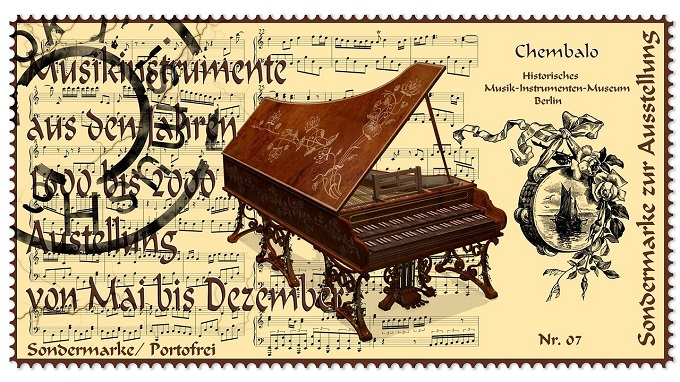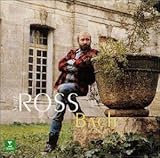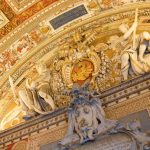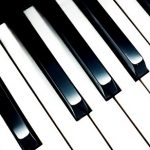 Once upon a time, a student of Bach named Goldberg approached his teacher one day and said, “Master, my employer is suffering from insomnia. Could you compose a delightful, healing piece of music that even Enya would envy, to help him sleep?” His employer, a count, was troubled by his sleeplessness. In response, Master Bach selected an Aria from Anna Magdalena Bach’s Notebook and developed it into an extraordinary piece.
Once upon a time, a student of Bach named Goldberg approached his teacher one day and said, “Master, my employer is suffering from insomnia. Could you compose a delightful, healing piece of music that even Enya would envy, to help him sleep?” His employer, a count, was troubled by his sleeplessness. In response, Master Bach selected an Aria from Anna Magdalena Bach’s Notebook and developed it into an extraordinary piece.
It is said that Goldberg gave the premiere performance of the work, but he was only 14 years old at the time. Whether he could actually play such a challenging piece is unclear.
Incidentally, young Goldberg later went on to become a composer himself, albeit not a major one, and left behind several works.
Today, let’s listen to Johann Sebastian Bach’s Goldberg Variations.
■ 目次
Can it really make you fall asleep?!
The piece begins with a very simple and beautiful aria, followed by 30 variations, and concludes once again with the same lovely aria. I believe this melody is one of the most beautiful ever created in the world.Among the 30 variations, the 16th and the final 30th variations stand out in particular.
The 16th variation feels like a turning point, where the style of the music suddenly changes. If you’re starting to drift off while listening, this variation is sure to wake you up! 🙂 It begins with a slow and grand tempo, then transitions into a faster-paced section. In Baroque music, pieces with this kind of structure—slow at the beginning and fast later—are known as “French Overtures.”
And the final 30th variation is a “Quodlibet,” a playful technique where two different melodies are sung together simultaneously. At the time, this type of performance was used as entertainment during gatherings where people drank and socialized. Bach incorporated two popular songs of the era, combining them with the Aria to create this final variation. Incredible!
(Note: Although the video caption says this is the 29th variation, it is actually the 30th variation.)
In modern terms, it’s like a karaoke duet at a lively snack bar. But this is no ordinary duet—it’s as if you’re singing two completely opposite songs, like the nursery rhymes “Spring Has Come” and “Snow Is Falling,” at the same time while weaving in an original melody. It’s such a fascinating performance that it might actually keep you awake!
The Appeal Beyond the Instrument
The Goldberg Variations was originally composed for the harpsichord. Today, however, there are countless arrangements performed on various instruments, including the piano, guitar, and string ensembles, in addition to both modern and historical harpsichords.Here, I’d like to introduce some of the best recordings featuring the harpsichord I’ve fallen in love with, along with other instruments.
Characteristics of the Historical Harpsichord
First, let’s talk about the historical harpsichord version. The greatest characteristic of historical harpsichords compared to modern instruments is their smaller sound. However, their tone contains rich overtones, resulting in a deeply resonant and nuanced sound. While they share the name “harpsichord,” modern and historical harpsichords feel like entirely different instruments.In the Baroque era, these instruments were not designed for large concert halls but were intended for intimate settings, such as private performances or as accompaniment for dances at parties.
The real charm of historical harpsichords lies in the fact that each one is handmade by craftsmen, giving each instrument a unique personality. Enjoying the individual sound of each harpsichord—that’s the true allure. To be honest, it’s quite niche.
Unlike the piano, the harpsichord cannot produce dynamics or add expressions to its tone like wind instruments. This makes it an instrument where the performer’s sense of phrasing, timing, and interpretation becomes very clear.
Now, let’s move from historical harpsichords to modern harpsichords, pianos, and other string and wind instruments in our exploration.
Masterpieces of the Harpsichord
Authentic Bach by a Japanese Artist
Masaaki SuzukiThis recording is by Masaaki Suzuki, the music director of the Bach Collegium Japan. In addition to the Goldberg Variations, he has produced numerous excellent recordings on period instruments, such as the Brandenburg Concertos and Cantatas.
Robust and Authentic Sound by a Pioneer of Early Music
Gustav LeonhardtThe sound is rich and stable, producing a very authentic tone. The Aria is played at a very slow tempo. Leonhardt has also left numerous recordings on period instruments. He can be considered one of the pioneers of early music.
Flawless Technique and Subtle Tones
Scott RossThis is a live recording, yet it exhibits seamless and flowing technique, offering a performance you can listen to with complete confidence. The harpsichord’s tone is calm and subdued. Scott Ross was an American harpsichordist who tragically passed away at the young age of 38 due to AIDS.
Bright, Gentle Sound
Pierre HantaïActually, the original album cover was different, featuring a white-faced woman that looks somewhat like a jiangshi (Chinese hopping vampire). Has it been discontinued? I thought it was a nice cover, though…
Personally, I believe this recording has the deepest, most flavorful sound. It is a rich, resonant tone, yet very bright and pleasing to the ear.
What Are Natural Harmonics?
Understanding the concept of natural harmonics is crucial when comparing period and modern instruments. For instance, when you play a “C” note on the piano, you also produce other inaudible sounds simultaneously. These are the natural harmonics. Since many sounds resonate together, the tone feels fuller and richer.Period instruments, with their abundance of natural harmonics, produce soft and deep sounds.
In brass instruments, for example, you can produce several notes using the same fingering. This is also due to natural harmonics. When the lips vibrate at a frequency close to the harmonic, it resonates and produces the note.
Modern instruments, on the other hand, are designed to reduce harmonics to create a clearer sound.
To use an analogy: a modern instrument is like an LED light, emitting bright and defined tones. A period instrument, with its rich harmonics, is like an incandescent bulb—warm, diffused, and full of character.
Exceptional Performances on the Modern Harpsichord
Modern harpsichords are somewhat analogous to grand pianos designed for concerts. They have greater volume and are built to complement modern instruments like violins or fit into orchestras and concert halls.While period harpsichords dominate today, does this mean modern harpsichords are fading into obscurity? Absolutely not! Modern instruments are remarkable as well.
Karl Richter
Karl Richter, a master of Bach performance, brings his solemn musicality to the harpsichord as well. The strength of modern instruments lies in the clarity of each note. Every sound detail is easy to grasp.
Masterpieces on the Piano
The Goldberg Variations for piano became widely recognized when Glenn Gould recorded them for his debut. In 1956, when the record was released in the United States, it topped the national charts, surpassing even new releases by Louis Armstrong.On the piano, the Goldberg Variations allow for even deeper expression. The dynamic range, sharpness, softness, and overall expressiveness go beyond what is possible on the harpsichord, resulting in a more expansive musical experience.
An Iconic Masterpiece of the Goldberg Variations
Glenn GouldThe 1981 recording is particularly famous. If you listen closely, you can hear Gould humming along! The Aria is played very slowly, creating a sensation as if time has stopped. However, the variations that follow are extremely intense—definitely not a performance to lull you to sleep, in the best sense.
The 1955 recording features a smooth, beautiful performance.
Another Masterpiece That Reveals Deeper Expression
András SchiffA pianist friend once suddenly called me to a practice room and passionately talked about Schiff’s Goldberg for over an hour. He explained Schiff’s innovative use of ornamentation, the way he carefully “sings” through tempo and phrasing, and more—while actually playing the piano to demonstrate. This was back when I was still a student.
Looking back, I still don’t know why he suddenly decided to share so much about Schiff’s Goldberg, but thanks to him, I came to truly understand the piece.
I believe the performances by Gould and Schiff are exceptional among piano renditions. They fully utilize the piano’s expressive capabilities.
Wonderful String Trio Version
Mischa MaiskyI was aware of the existence of a string ensemble version, but I never felt particularly inclined to listen to it. Somehow, it struck me as mood music. However, I recently happened to hear this string trio version, and I was absolutely stunned. How beautiful it is! The performance, with its restrained use of vibrato and the violin’s stylish staccato, is exquisite.
Brass Quintet
Canadian BrassI came across this brass quintet version of the Goldberg Variations playing at a certain CD shop. I was amazed at how beautiful the sound of brass instruments could be! There was no hesitation—I immediately asked the staff, “Can I have this CD, please?” It was an instant decision. Who would have thought of performing the Goldberg Variations with a brass ensemble?
Even with strings, the ability to sustain notes brings out new expressions in this piece. I highly recommend this CD to brass players. 🙂
Now, to wrap things up, here’s a slightly unusual masterpiece…
Jazz Piano
Keith JarrettFinally, here’s a version of the Goldberg Variations performed by a jazz pianist. However, this recording isn’t played on a piano but on a modern harpsichord. It doesn’t particularly swing, nor does it have much fluctuation in tempo—it’s essentially a straightforward classical performance.
But… this simple Goldberg is incredibly soothing. After introducing so many unique masterpieces, I find myself able to relax and take a breather with this performance. It feels as comforting as listening to Keith’s album The Melody At Night, With You.
Well, now I finally feel sleepy. Goodnight, everyone.

- J.S. Bach "Goldberg Variations" Masterpiece! The Charm of Historical Harpsichords and the Beauty of the Melody 2017/7/9 ←Currently Viewing Article
- How to Master Bach’s ‘Italian Concerto, First Movement’: Difficulty Level Explained! 2018/9/5
- Difficulty Level and Tips for Playing Bach’s “Italian Concerto, Third Movement” 2018/11/22

















